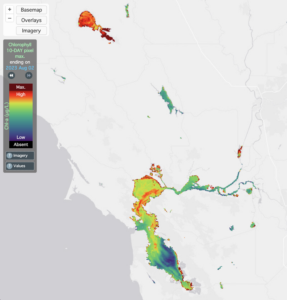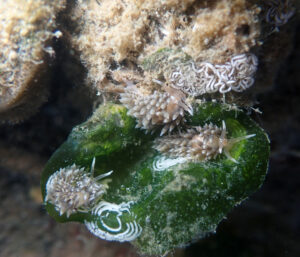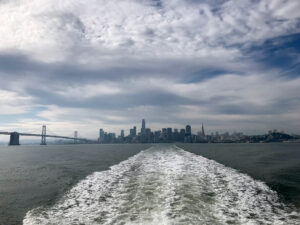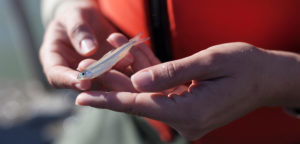It started as a low rumble and proceeded to get louder and louder. Curious, I stepped out onto the deck just as a large white and red twin-engine propeller plane thundered directly overhead, descending to the northeast. Ten seconds later another identical plane rumbled by overhead a few hundred yards to the north. They were (I later found out) specialized Bombardier 415 “Super Scooper” firefighting planes, heading down to Tomales Bay below. Their mission: scoop up bay water into their enlarged hulls to drop on the Woodward Fire burning in the core of the Philip Burton Wilderness area of Point Reyes National Seashore a few miles to the south.
The loud flights over and around our house on the eastern-facing slope of Inverness Ridge continued throughout this late August afternoon. Two other larger four-engine planes were circling higher up in the sky, returning time and again to the fire area. I later learned that these were dropping orange fire retardant on the edges of the fire zone. My view of the fire itself was blocked by the long shoulder of Inverness Ridge, and on that day, the wind was blowing the smoke from the fire away from our side of the ridge, so for the moment at least, the sky above was blue and clear.
Early that evening, my partner and I decided to drive down the hill to get a look at the big planes as they skimmed the Bay. On the way down, we ran into two sheriff deputies heading up the hill. They told us they were pre-positioning in expectation of a possible evacuation order later that night. After a short discussion, we decided it would be most prudent to evacuate before dark.
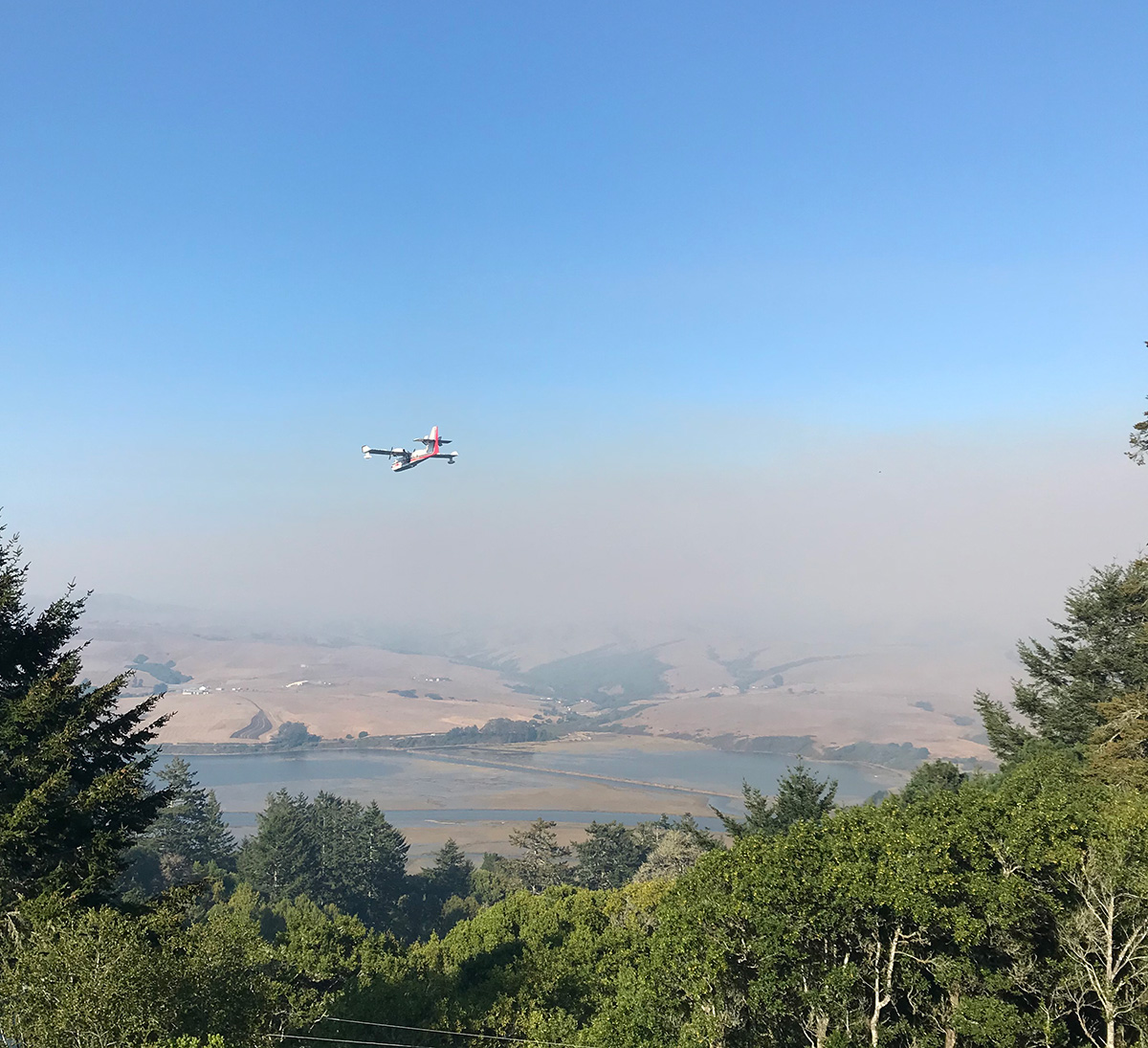
I’ve lived in California long enough, and studied California wildlands long enough, not to be surprised that there was a major wildfire burning nearby. Perhaps the bigger surprise was that just one year before, In August 2019, I had fulfilled a long-held dream of buying a house on the Point Reyes peninsula, putting myself squarely in a “high brush zone” (according to the insurance company ratings), in an area just below the eastern edge of the previous major wildfire in the area, the 1995 Vision Fire. My decision to relocate to the Bay Area from the East Coast back in the early 1970s had been made, in part, due to a visit to San Francisco that included a memorable day trip to Point Reyes National Seashore. In those pre-internet days, living out at Point Reyes was not an economically viable option. But the dream remained. And when this beautiful house with its lovely view of the Giacomini Wetlands and the West Marin hills became available, we took the plunge.
Suffice it to say, the past year of part-time residency on Inverness Ridge has been different than I expected. On the morning of August 19, I stood on the east-facing deck and watched two massive billowing smoke clouds rising to the east (both from the LNU Lightning Complex) and another to the north (the Walbridge Fire). That evening, I hiked over the ridge to get a view of the huge smoke cloud of the Woodward Fire, just a couple of miles away. So my erstwhile “refuge on the ridge” had become a front row seat to another of the dystopian aspects of this current plague year. Over the past eight months, we have lived through two separate closures of the national park—one for the coronavirus pandemic and the other for the fire—not to mention a couple of “stay inside” orders (for both Covid-19 AND smoke) and “get out” warnings.
Both Point Reyes National Seashore and Tomales Bay State Park were closed following that first spring weekend after the pandemic-related “stay-at-home” order had been issued, when huge numbers of nature-seekers descended on the beaches and trails of West Marin, causing overflow at all the parking areas and shortages at the few local food stores. That onslaught—causing the opposite of “social distancing”—led to much discussion among residents of Inverness and Point Reyes Station who were now effectively barred from “their” local parks and open space. Not to mention concern about their ability to purchase food and other essentials without having to risk travel “over the hill.”
Fortunately, we weren’t totally shut out of open space, as the closure essentially only applied to cars. A steep one-mile walk up our road provides access to trails on Inverness Ridge. While the tiny parking area at the trailhead was coned off, the entrance itself was open, allowing us to hike to the top of the ridge with its magnificent views from Point Reyes Hill. And getting more creative, we found a way to drive ourselves and our bikes closer to the northern section of the park, and then bike out from there to several beaches.
Pedaling along the road with no car traffic and no people was both eerie and exhilarating. It felt like we had several thousand acres of open space to ourselves: the trails to Abbotts Lagoon and Kehoe Beach; the rutted ranch roads to Marshall Beach and Duck Cove. No longer an overcrowded recreation area, the park reverted to being a truly wild place. And we were as “socially distanced” as we could possibly be.
And as a bonus, in the process of poking around we discovered several great wildflower spots I hadn’t encountered in my previous 45 years of visiting the park. Standing in the middle of fields of pussy ears, blue-eyed grasses, goldfields and Ithuriel’s spears overlooking Tomales Bay, it was hard to reconcile the solitary beauty around us with the horrific realities of a global pandemic wreaking its havoc on the world.
As for the wildfire, it wasn’t unexpected. One of the first things I had done after purchasing the house was to get advice from the local fire captain on improving defensible space around the house. Our house is set on an acre of mixed huckleberry-coffeeberry scrub and bay laurel-Doug fir woodland. I love huckleberry, with its shiny green ovoid leaves and tiny sweet/tart black berries in late summer. But the solid thickets on two sides of the house posed a danger, according to the captain. So over the past year, we’ve taken out a lot of the huckleberry and coffeeberry bushes, creating separation between them in the critical zone around the house.
In the 30 to 100-foot zone, we’ve worked to open up some space between the trees (bays, tan oaks, Doug fir, even a couple of chinquapins) and the bushes. Most of the vegetation on the property is native, and entirely appropriate for this area. But if we’re going to live here, there will need to be a greater degree of “vegetation management” than in years past. Many of our neighbors bought their houses years ago because they wanted to live in a forested refuge. But now we look at those mature bay laurels, Doug firs, tan oaks, and bishop pines, and think “fire trap” rather than “refuge.” So there’s an attitudinal shift taking place on the ridge, reflected perhaps in the growing popularity of the neighborhood association’s twice- a-year woody debris chipping program. (And in the sky-rocketing fire insurance rates.)
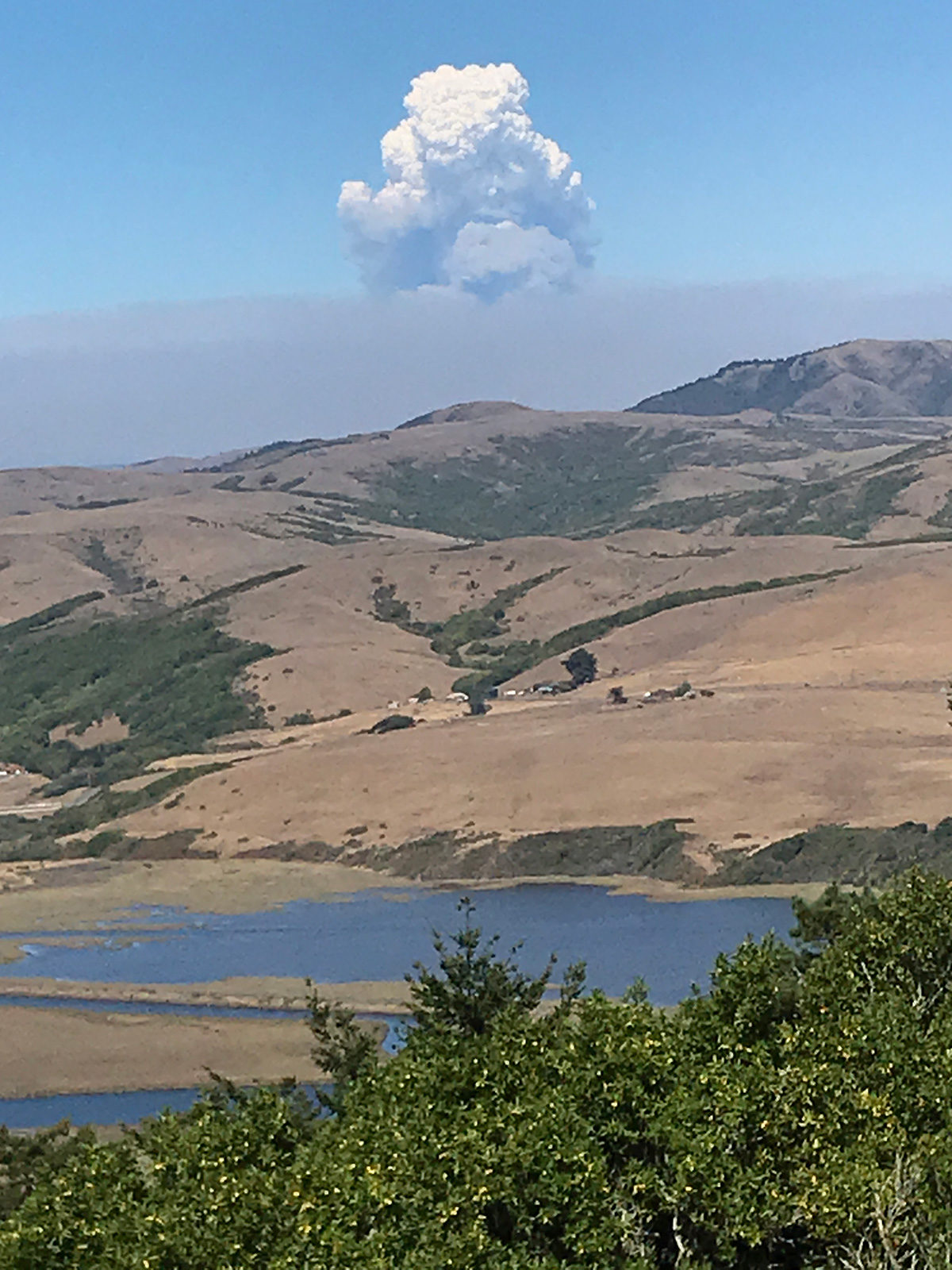
And then there’s the smoke. Being near the coast is no longer a guarantee of clear skies and clean air. With one of the fires so close, and others burning to the north and east and south, the air quality can be as poor here as in the center of the Bay region. On a recent trip out to Kehoe Beach, the smoke mixed with the fog off the ocean to create gray-out conditions, obscuring the waves until I was within ten feet of the shore. Just like folks in the city, we checked the Purple Air website frequently to assess if we could go out for a walk, or even to work in the yard.
So is it all worth it? Even now in December, a large section of the national park is still closed, and will remain so for a while, due to the hazards of acres of burned trees and unstable hillsides. And the whole Bay Area has been subjected to days on end of unhealthy, smoke-filled air every year for the past three years. And now yet another Red Flag warning … in the second week of December! A few people I know are saying “Enough is enough; it’s time to leave.” But others are asking, “But where else would we go?” After all, the climate crisis is manifesting itself everywhere, in ways both predictable and surprising.
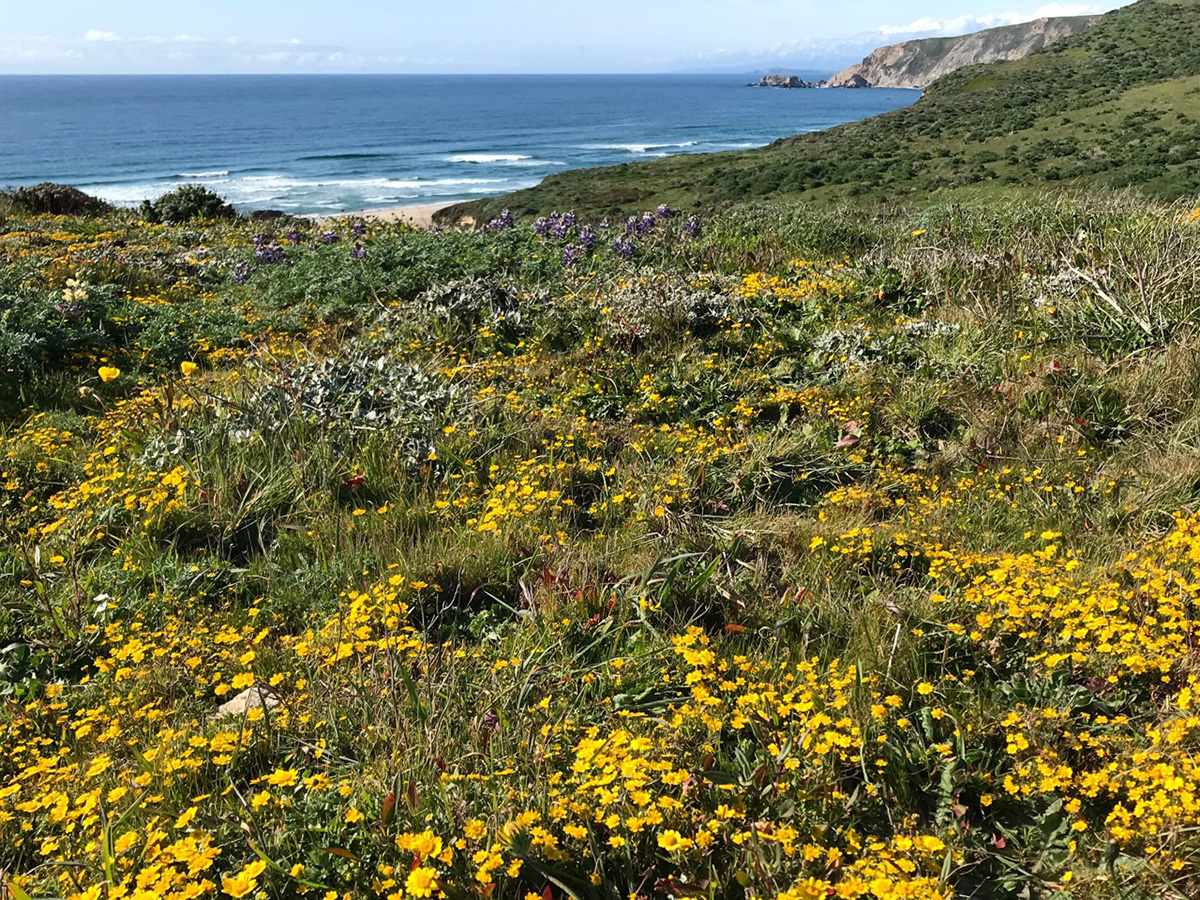
The Bay Area is where I have lived for 47 years, more than twice the 22 years I lived growing up in New York City. It’s here where I’ve come to recognize the plants and trees around me, identified the birds above, and some of the rocks below. The subtle changes of the seasons, which some claim are not noticeable, are a recurring thrill to me. So I know this place and have a stubborn resistance to pulling up stakes. And then there’s the network of people and organizations that are dedicated to understanding of how the climate crisis impacts the region and are working creatively to find solutions. It’s that same mix of natural beauty, cultural diversity, intellectual dynamism, and environmental awareness and action that made it possible to found and build Bay Nature, that will likely keep me here, even as the hazards continue to increase.
The other evening, as the sun was going down, we were sitting on the deck that looks out across the forested hillside to the Wetlands below. Suddenly a large bird flew silently out of the woodlands straight toward us, veering off at the last minute and heading uphill into the forest. The heart-shaped face and white chest told us it was a barn owl, the first one we’d seen here on the ridge. The next morning, two gray foxes walked calmly across the patio, stopping to look at us staring out at them through the window. They sauntered off, leaving us a few poop pellets on the stone wall before disappearing into the woods.
I think we’ll stay.


